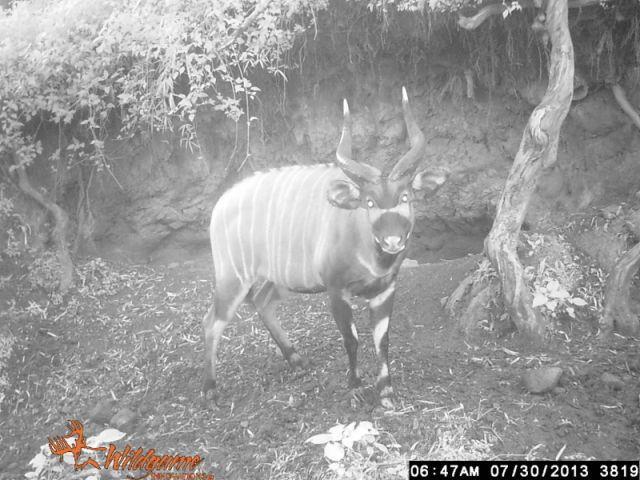Michael Prettejohn
Other projects
The purpose of the Bongo Surveillance Project (BSP) is to secure a future for the last remaining Mountain Bongo (Tragelaphus eurycerus isaaci) in the wild and to protect the forests where they live. The Mountain Bongo antelope is only found in Kenya and is on the critically endangered (IUCN RED list).
The Mountain Bongo is on the verge of extinction mainly due to poaching, habitat loss and forest degradation. The species has undergone a drastic decline over the last 50 years, with inferential data collected suggesting there may be fewer than 100 individuals remaining in the wild.

The vital scientific data collected from the BSP expeditions forms a crucial baseline about bongo locations, habitat utilization and threats. The BSP surveillance activity has the potential to find and protect the last remaining groups of bongo. The Mountain Bongo is in need of priority protection. As a forest dependant species and flagship for Kenya’s remaining high forest ecosystems, efforts towards conservation of bongo will in turn benefit Kenyan forest cover.
The programme works closely with Kenya Forest Services and Kenya Wildlife Services and other local NGO’s in this region to maximise resources. The surveillance trackers are drawn from the local communities residing in areas adjacent to identified bongo locations. The tracker teams support the community /school outreach programmes. Using the initial small grants from the RSG programme, the BSP has developed a conservation awareness programme of activities working alongside local schools (13) and their communities. The programme is a long term investment. Through the BSP “Bongo Wildlife Clubs” it aims to engage local communities in bongo conservation by illuminating responsible management practices, wildlife protection, and a pride for local wildlife.
Continuing recovery of bongo can only be ensured by enhancing local monitoring capacity and increasing field time. This in turn expands the scope of research and data collection and provides a quantitative means to critically evaluate the effectiveness of the BSP actions.
Bongo Surveillance Activity:-
1) Database management: Establish a database that archives all data collected on conservation and related ecosystem activities, maps of bongo hotspots and patrols.
2) Camera trapping: Deploy additional camera traps to further expand database of recognizable individual bongo and improve population estimates.
3) Dung sample collection: systematically collect bongo dung samples and other samples (hair, tissue) for both captive and wild bongo, record respective GPS coordinates.
4) Monitor all known bongo subpopulations and provide security patrols for forest habitat.
5) Reporting to KWS, KFS charcoal, illegal timber extraction and poaching evidence.
6) Storage/processing of bongo dung samples: Manage, archive and prepare dung samples.